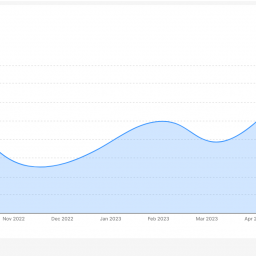Exploring AI and Automation in Workforce Management Software
Workforce management software has long been a valuable tool for organizations seeking to optimize their workforce, streamline operations, and drive efficiency. However, with the rapid advancements in artificial intelligence (AI) and automation, workforce management software has reached new heights of sophistication and effectiveness. AI and automation have the potential to revolutionize the way businesses manage their workforce, from talent acquisition and scheduling to performance management and data analysis. In this article, we explore the impact and benefits of AI and automation in workforce management software, as well as the challenges and considerations associated with their implementation.
1. AI-Driven Talent Acquisition
One of the significant challenges in workforce management is finding the right talent for the organization. AI-powered workforce management software can revolutionize talent acquisition by leveraging machine learning algorithms to analyze vast amounts of data from various sources, including resumes, social media profiles, and candidate assessments.
AI-driven talent acquisition can help organizations identify top candidates, reduce hiring bias, and streamline the recruitment process, ultimately leading to better hires and increased productivity.
2. Automated Workforce Scheduling
Workforce scheduling can be a complex and time-consuming task, especially for organizations with large and diverse teams. AI and automation in workforce management software can automate the scheduling process, considering factors such as employee availability, skills, preferences, and labor laws.
Automated scheduling ensures optimal staffing levels, minimizes scheduling conflicts, and improves employee satisfaction by providing more predictable work schedules.
3. AI-Enhanced Performance Management
AI can play a crucial role in performance management by providing real-time feedback and personalized development plans for employees. AI-driven performance management tools can analyze employee performance data, identify areas for improvement, and recommend targeted training and development opportunities.
With AI-enhanced performance management, organizations can foster a culture of continuous improvement and better align employee goals with organizational objectives.
4. Predictive Analytics for Workforce Planning
AI-powered analytics in workforce management software can provide organizations with predictive insights into workforce trends and patterns. By analyzing historical data and current workforce metrics, AI can forecast future workforce needs and potential talent gaps.
Predictive analytics enable organizations to proactively address workforce challenges, plan for growth, and make data-driven decisions to stay competitive.
5. Employee Engagement and Feedback
AI and automation can also enhance employee engagement by facilitating regular feedback and communication. Chatbots and virtual assistants can provide employees with timely information, answer their questions, and collect feedback anonymously.
By fostering open communication and addressing employee concerns, organizations can improve employee satisfaction and retention.
6. Compliance and Risk Management
AI-driven workforce management software can help organizations stay compliant with labor laws, regulations, and safety standards. The software can automatically track employee work hours, breaks, and certifications, reducing the risk of non-compliance and penalties.
Automated compliance checks enable organizations to prioritize employee safety and adhere to legal requirements.
7. Training and Learning Opportunities
AI and automation can personalize training and learning opportunities for employees based on their individual needs and preferences. The software can recommend relevant courses, resources, and learning paths to help employees acquire new skills and stay up-to-date with industry trends.
Personalized training enhances employee development and contributes to a skilled and adaptable workforce.
Challenges and Considerations
While AI and automation offer numerous benefits in workforce management software, there are also challenges and considerations to address. These include:
Data Privacy and Security:
Organizations must ensure that sensitive employee data is protected and comply with data privacy regulations.
Ethical AI Use:
To prevent biases and discrimination, AI algorithms must be designed and trained with ethical considerations in mind.
Employee Adoption:
Employees may initially be hesitant to embrace AI and automation in the workplace. Proper training and communication are essential to promote acceptance and engagement.
Integration and Compatibility:
Ensuring seamless integration with existing systems and compatibility with other software solutions is critical for a smooth implementation.
Continuous Improvement:
AI algorithms require continuous monitoring and improvement to maintain accuracy and relevance over time.
Conclusion:
AI and automation are transforming the landscape of workforce management software, empowering organizations to optimize their workforce and drive efficiency. From AI-driven talent acquisition and automated scheduling to enhanced performance management and predictive analytics, the benefits of incorporating AI and automation in workforce management software are vast.
However, it is crucial for organizations to address the challenges and considerations associated with AI and automation implementation. By striking a balance between technological advancements and ethical considerations, organizations can unlock the full potential of AI and automation to create a more agile, productive, and engaged workforce.
As AI technology continues to evolve, workforce management software will continue to evolve with it, offering even more sophisticated solutions to meet the dynamic needs of modern businesses. By embracing AI and automation in workforce management, organizations can position themselves for success in an ever-changing and competitive business landscape.
















